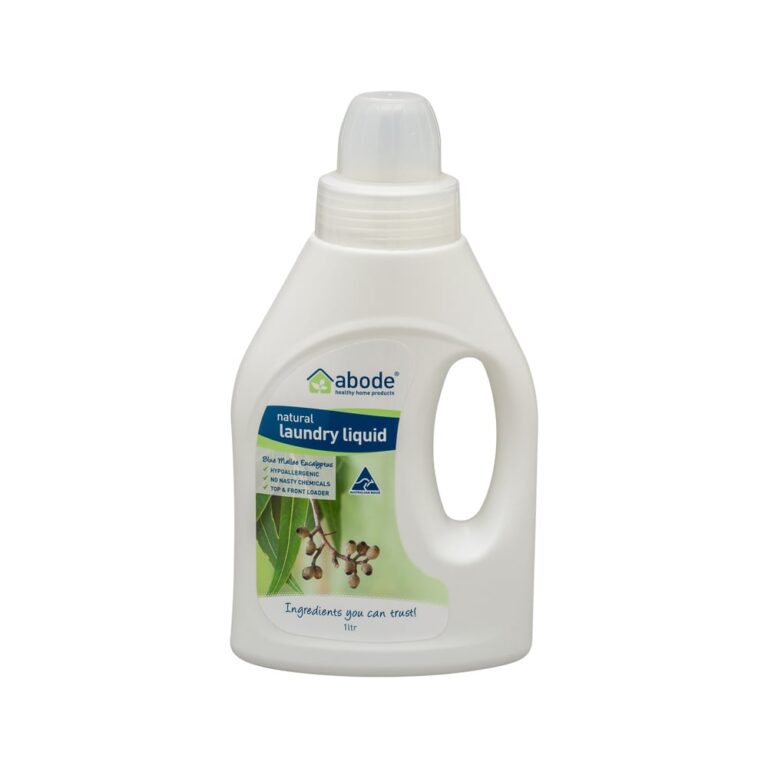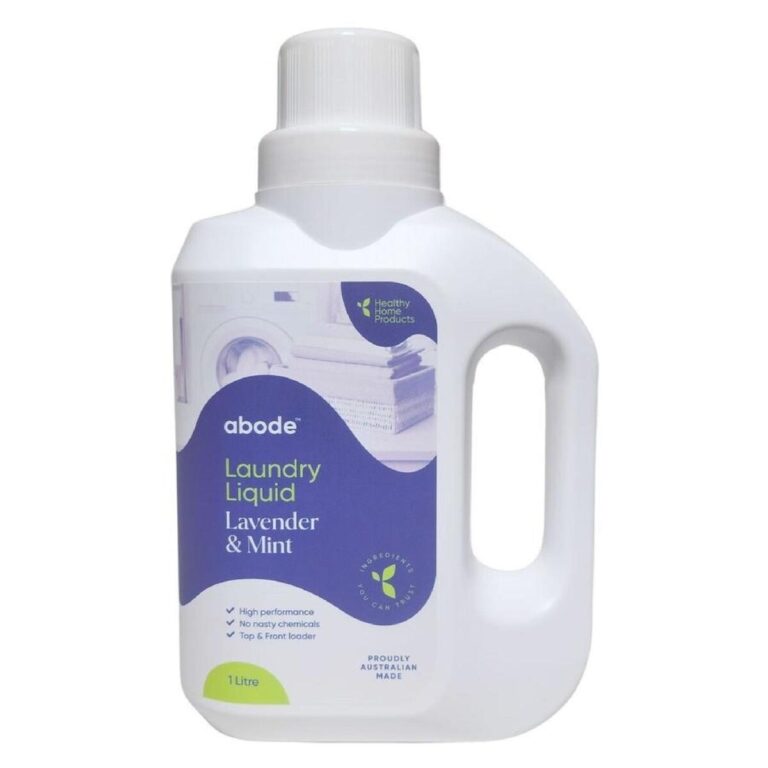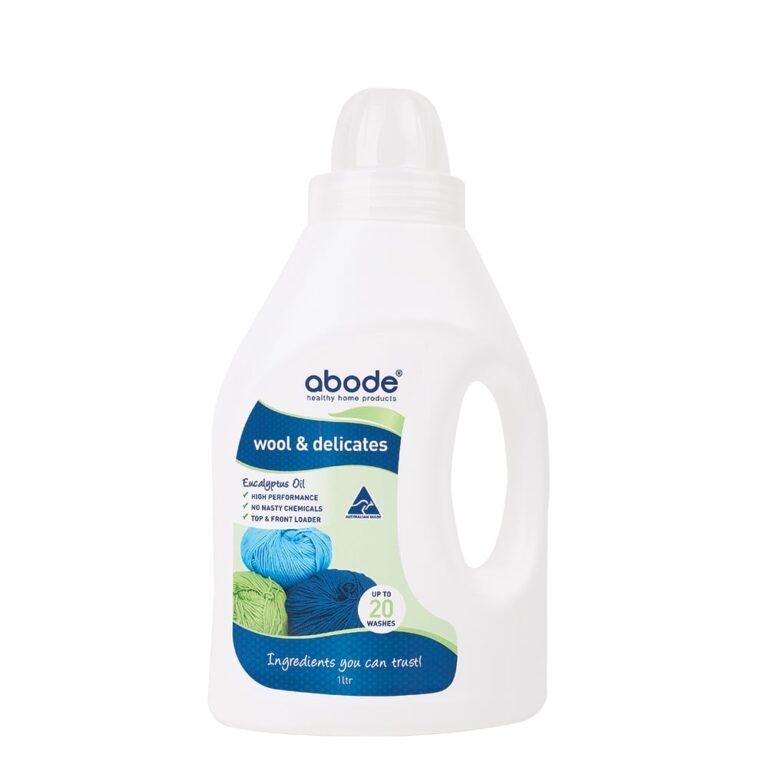Abode Fabric Softener (Front & Top Loader) Comfort Fresh
No more using toxic commercial fabric softeners, this plant based formula contains no nasty chemicals or artificial fragrances and leaves your clothes, sheets and towels amazingly soft! Also, the essential oil blend including Lavender, patchouli and juniper leaves them smelling beautifully fresh!
Abode’s Fabric Softener is derived from plant and mineral based ingredients it is free from nasty chemicals such as phosphates, zeolites and harsh surfactants such as the sulphates and coco betaines. Biodegradable and grey water safe, the ultra concentrated formulation only requires a small amount making it a great buy for the health conscious buyer.
Machine Type: suitable for front and top loaders
Water temperature: suitable for hot and cold water
Free from zeolites, phosphates, palm oil, petrochemicals, optical brighteners, chlorine and NO SALT!
Made from food grade ingredients (where available) and NOT industrial grade ingredients that are typically contaminated with heavy metals
Formulated by a naturopath from the ground up, taking into consideration the health of your family
Grey water and septic tank safe
Biodegradable and pH neutral
Australian made and owned
$17.29 – $51.96Price range: $17.29 through $51.96
Product information
| Volume | , |
|---|---|
| Brand | |
| Product Attributes | , , , |
Ingredients
WATER, ESTERQUAT, ALKYLPOLYGLUCOSIDES, CALCIUM CHLORIDE, SODIUM HYDROXYMETHYGLYCINATE, PURE ESSENTIAL OIL BLEND (LAVENDULA HYBRIDA OIL, CINNAMONIUM CAMPHORA LINALOOLIFERUM LEAF OIL, JUNIPERUS VIRGINANA WOOD OIL, POGOSTEMON CABIN LEAF OIL, CINNAMOMUM ZEYLANCUM LEAF OIL)
Directions for use
Front Loaders: normal load: 1/4 cap / heavy load: 1/2 cap
Top Loaders: normal load: 1/2 cap / heavy load: 1 cap
Handwash or soaking: 1/2 cap per 5 litres of warm water
Customer Reviews
You May Love...
Online Sports Nutrition and Natural Dietetics.
Chances are there wasn't collaboration, communication, and checkpoints, there wasn't a process agreed upon or specified with the granularity required. It's content strategy gone awry right from the start. Forswearing the use of Lorem Ipsum wouldn't have helped, won't help now. It's like saying you're a bad designer, use less bold text, don't use italics in every other paragraph. True enough, but that's not all that it takes to get things back on track.
The villagers are out there with a vengeance to get that Frankenstein
You made all the required mock ups for commissioned layout, got all the approvals, built a tested code base or had them built, you decided on a content management system, got a license for it or adapted:
- The toppings you may chose for that TV dinner pizza slice when you forgot to shop for foods, the paint you may slap on your face to impress the new boss is your business.
- But what about your daily bread? Design comps, layouts, wireframes—will your clients accept that you go about things the facile way?
- Authorities in our business will tell in no uncertain terms that Lorem Ipsum is that huge, huge no no to forswear forever.
- Not so fast, I'd say, there are some redeeming factors in favor of greeking text, as its use is merely the symptom of a worse problem to take into consideration.
- Websites in professional use templating systems.
- Commercial publishing platforms and content management systems ensure that you can show different text, different data using the same template.
- When it's about controlling hundreds of articles, product pages for web shops, or user profiles in social networks, all of them potentially with different sizes, formats, rules for differing elements things can break, designs agreed upon can have unintended consequences and look much different than expected.
This is quite a problem to solve, but just doing without greeking text won't fix it. Using test items of real content and data in designs will help, but there's no guarantee that every oddity will be found and corrected. Do you want to be sure? Then a prototype or beta site with real content published from the real CMS is needed—but you’re not going that far until you go through an initial design cycle.







